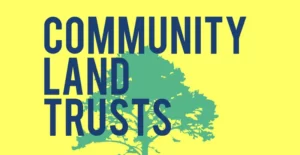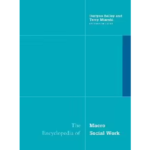LORRAINE GUTIERREZ, KAREN FREDRICKSEN, AND STEVE SOIFER
This article presents data from a secondary analysis of a 1992 survey of graduate social work faculty to identify their views of the importance of content on diverse populations and types of oppression. The large majority of respondents rated content on several population groups and types of oppression to be important or very important. In most categories, however, the respondents rated including content on populations rather than on types of oppression to be more important, at a statistically significant level. The authors discuss the implications of this finding and place it in the context of current writings on multicultural social work.
IN 1968, THE COUNCIL ON SOCIAL WORK EDUCATION (CSWE) voted to consider the degree to which programs incorporated content on women and people of color into their curriculum when making accreditation decisions (Gallegos, 1984). The decision, rooted in years of advocacy and research by members of CSWE and its commissions on women and ethnic minority issues, led to changes in the Curriculum Policy Statement and Evaluation Standards (Greene, 1994). The impetus for this policy change was to require social work programs to be more effective in educating students for work in a diverse society.
LORRAINE GUTIERSEZ is an associate professor, at the School of Social Work, University of Michigan; Karen FREDRICKSEN is an associate professor, at the School of Social Work, University of Washington; and Stevie Sotfer is an associate professor, at the School of Social Work, University of Maryland at Baltimore.
Since that time, demographic and political trends have made the need for learning about cultural diversity and societal oppression increasingly important (Murdock & Michael, 1996). In response to these trends, CSWE has become more proscriptive regarding the need for social workers to be educated for practice that is sensitive to race, ethnicity, gender, and sexual orientation, and for the focus of education to be on content about groups and about the impact of oppression on these groups. (CSWE, 1992; Greene, 1994; Greene 8 Watkins, 1997).
Journal of Social Work Education Vol. 35, No. 3 (Fall 1999).
© by the Council on Social Work Education, Inc. All rights reserved.
Page 1
| JOURNAL OF SOCIAL WORK EDUCATION |
Despite this clear mandate from the accrediting body regarding the groups to be covered and the perspective to be taken, one finds little agreement within the social work literature regarding how and where to teach this content and the form it should take (Davis & Proctor, 1983; DeAnda, 1997; Greene, 1994; Longres, 1997; Torres & Jones, 1997; Van Soest, 1996). Instead, multiple and sometimes conflicting perspectives have been presented in the past 25 years. This contributes to confusion regarding the meaning of this standard for social work education (Greene & Watkins, 1997; Tice, 1990).
Adequate and useful education for a diverse society relies on faculty comfortable with the material and competent to teach it. Little research exists on the perspectives of faculty on diversity content and whether their knowledge and skill levels are adequate. Without support for content on diversity, there is a danger that it will be covered inadequately or not at all (Humphreys, 1983; Newman,1989; Siefert & Butter, 1992).
This article is an effort to address some of the profession’s gaps in knowledge by building on the existing literature. It begins with a general discussion of ways in which the literature has described this content. It then reports data from 2 national surveys of social work educators regarding diversity content. The final discussion focuses on the issues and implications that arise from these data. The authors hope that the information presented here will generate further discussion on approaches to diversity content in social work education.
Diversity Content in Social Work Education
The literature on diversity content has focused on the requisite cognitive, affective, and behavioral components of professional education as well as on methods for teaching. This literature provides a great deal of prescriptive advice regarding teaching, with little empirical data to evaluate the effectiveness of different approaches.
The literature on teaching about women, people of color, gay men, and lesbians has most often focused on the need for accurate content on specific groups. The focus on content about groups is based on the assumption that information is a critical dimension for working with diverse populations (Chau, 1990; Davis & Proctor, 1989; Greene, 1994; Pastorello & Schooler, 1988). However, the tendency to focus solely on content without attending to the affective or behavioral components of practice has been described as inadequate. Such an approach can encourage emotional distance or may prevent educators from focusing on how power differentials and oppression characterize the experiences of different groups (Greene, 1994; Gutiérrez & Nagda, 1996; Latting, 1990; Longres, 1991; Torres & Jones, 1997).
Several authors have increased the focus on the affective dimension of education for work with diverse groups, including how attitudes toward different groups can lead to bias and inappropriate services {Davis & Proctor, 1989; Greene, 1994; Latting, 1990; Newman,1989). Indeed, attitudes toward people of color have been found to be predictive of service outcomes (Davis & Proctor,1989). The goals of affective learning are to become aware of one’s own prejudices and beliefs and how one’s worldview affects one’s work (Greene, 1994; Lewis,1993; Newman, 1989, Torres & Jones,1997). Once that awareness is developed, the student can then both appreciate how the world view of clients and communities affects their experience and begin to develop alternative world views (Granger & Portner, 1985), The goal is thus more accurate and impartial interactions with women, people of color,
Page 2
| FACULTY PERSPECTIVES AND DIVERSITY AND OPPRESSION CONTENT |
and other oppressed groups (Granger & Portner, 1985). This view of multicultural education is more process-oriented than outcome-focused, and integrates both emic and etic perspectives (Greene, 1997).
The literature on multicultural practice has often contrasted the ethnically sensitive or culturally competent approach with one that focuses on oppression and status differences {Gutiérrez & Nagda, 1996; Longres, 1991; McMahon & AllenMeares, 1992). Ethnic-sensitive approaches have been characterized as focused on learning about culture and ways in which differences can be used in the design, development, and delivery of programs and services (Iglehart & Becerra, 1995; Lum 1998). Ethno-con-scious approaches consider culture in the context of oppression and focus on ways in which race, ethnicity, and other status characteristics have been used in the differential allocation of resources in our society (Gutiérrez, 1997; Longress, 1991; Simpson, 1990). This perspective moves beyond the current focus on content and effect in multicultural education to skills for working around status differentials and toward social justice and empowerment.
Research on Diversity Content
Few studies have looked at the amount of diversity content in social work curricula, Two surveys have targeted individual programs to determine their curriculum content on gender (Knight,1991) and aging (Lubben, Damron-Rodriguez & Beck, 1992). Knight’s survey (1891) indicated that almost all of the responding schools incorporated some content on specific women’s issues. The study on aging content found that while almost all schools described content on aging as “important” or “very important,” there was a recent, substantial drop in the number of social work programs offering an aging concentration (Lubbenet al, 1992).
Two surveys have examined the incorporation of content from the perspectives of individual educators. Humphreys’s (1983) survey of all California MSW educators, which yielded a 37% response rate, showed that the curriculum lacked adequate content on gay and lesbian issues. Moreover, faculty members who were less prejudiced toward their gay and lesbian acquaintances and friends were more likely to include gay and lesbian content in their courses. A survey of faculty in the southeastern United States attempted to look at content on religion (Sheridan, Wilmer, & Atcheson, 1994). Their results revealed widespread support for this content, with 80% of the respondents favoring course content on religion and spirituality.
Although these studies suggest support for diversity content, they are restricted by their samples and specific focus, and many were conducted before the inclusion of content on gays and lesbians into CSWE’s Evaluative Standard 3.0 (CSWE, 1994), which became effective in June 1998, To date, no research has looked at the attitudes of social work faculty toward diversity content in general. A more general survey can be useful to get a clearer picture of how supportive faculty are of diverse content and what kinds of material they think would be important to teach.
Research Questions and Methodology
This quantitative and descriptive study will clarify how faculty in schools of social work think about diversity content. Do they see it as important? Do some groups of faculty view it as more important than others? Using data from a larger survey on Jewish content (Soifer & Schnyder, 1994), we attempted to answer the following questions:
Page 3
| JOURNAL OF SOCIAL WORK EDUCATION |
- How do faculty in schools of social work rate content on diversity?
- Do faculty in schools of social work think that some types of diversity content are more important than others?
- What predicts support of diverse content?
Sample
A 1992 national survey of 400 randomly chosen full- and part-time MSW social work educators form the database for the article. A complete list of all the teaching faculty at MSW-accredited schools of social work across the United States, including Puerto Rico, was constructed by the authors. All social work schools with accredited MSW programs (n=102) were contacted and asked to send the authors their most current faculty list. Lists were received from all the schools and a complete list was compiled. From the 2,069 names on the list, 400 were randomly chosen to receive our survey (19.3%).
The preparation of the survey questionnaire and the procedure for sending it out followed Dillman’s (1978) total design method. The most distinctive features of this method are the utilization of a booklet format for the survey and the recommendation to send out four mailings within a seven-week time frame. One week after the first mailing goes out, a reminder postcard is sent out to the sample. Three weeks after the first mailing, a reminder letter and duplicate questionnaire are mailed to nonrespondents. Seven weeks after the first mailing, another letter and replacement questionnaire are sent out by certified mail to those who still have not responded. All respondents were also assured that their answers would remain confidential.
A total of 278 usable completed surveys were obtained within three months of mailing (69.5% response rate). Of the remaining 122 incomplete surveys, 24 people replied to say that, for one reason or another, they chose not to participate in the survey; 3 people had moved and were unreachable; and 1 person had died.
Measures
The survey questionnaire was divided into four sections. The first section asked questions concerning faculty beliefs about the relative importance of including content on various populations (people of color, gays, and lesbians, women, Jews, people of different ages, people from different social classes, people with disabilities, and power differences between people) and corresponding forms of oppression (racism, heterosexism/homophobia, sexism, antiSemitism, ageism, ableism, classism, and authoritarianism). A five-point scale (very important, important, somewhat important, little important, and not important) was utilized. To control against a fixed response set by respondents, variables in the population areas and variables in the oppression areas were placed in different orders.
Moreover, to look at attitudes toward diversity in more depth, these items were summarized into two additional scales. A
summary diversity content scale was constructed using mean faculty responses to the seven items rating the importance of
including content on specific population groups (Cronbach’s alpha=.88). An oppression content scale was assessed utilizing
the mean score for the responses to the seven items rating the importance of including content on specific types of oppressions (Cronbach’s alpha=. 88).
A final section asked questions about personal and demographic information, such as level of education, current teaching status, full-time or part-time teaching, years of teaching, teaching area, in what state their school was located, size of city or town, size of MSW program, size
Page 4
| FACULTY PERSPECTIVES AND DIVERSITY AND OPPRESSION CONTENT |
of faculty and student body, whether the school was public or private, gender, age, racial/ethnic background, religious up bringing, and current religious identity. These variables were the independent variables used to look for predictors of attitudes toward diversity and oppression.
The remaining questions were designed to find out how much content on Jews and anti-Semitism exists in social work curricula across the country and to ascertain social work educators’ level of knowledge about Jews and anti-Semitism. These questions were not the focus of this particular article, except as they relate to attitudes toward diversity content.
Results
As displayed in Table 1, the distribution of women and men among survey respondents was about equal. Nearly 76% of the survey respondents were European American, 12.6% were African American, 5.6% were Latino/Hispanic, and 4.4% were Pacific Islander/Asian. The median age of respondents in this survey was 50, ranging in age from 33 to 72. Under religious identity, 31.9% identified themselves as Protestant, 22.3% as Jewish, and 15.8% as Catholic.
The vast majority of survey respondents had completed advanced degrees and held tenure-track positions. For example, 85.6% of the respondents had doctorate degrees (58% in the field of social work) and more than 98% had a master’s degree (90% had an MSW); 30.4% were full professors, 37.4% were associate professors, and 29.6% were assistant professors. For the regional distribution, 35.4% taught at schools in the East, followed by 23.5% in both the Midwest and South and 17.6% in the West.
The majority of the survey respondents were employed at public institutions as compared to private institutions, approximately 70% and 30%, respectively. The respondents taught in the following areas: 43% in interpersonal practice and field of practice, 35% in macro practice (e.g., social policy, planning,
Table 1. Sample Characteristics (Percentages)
| Gender | |||
| Female | 50.2 | Male | 49.8 |
| Race/Ethnicity | |||
| White (non-Hispanic) | 75.6 | African American | 12.6 |
| Latino (a) /Hispanic | 5.6 | Pacific Islander/Asian | 4.4 |
| Other | 1.9 | ||
| Age | |||
| 30-39 | 11.4 | 40-49 | 34.8 |
| 50-59 | 31.5 | 60 and over | 22.3 |
| Religious Identity | |||
| Protestant | 31.9 | Catholic | 15.8 |
| Jewish | 22.8 | Other | 30.0 |
| Highest Educational Degree | |||
| Doctorate | 85.6 | Master’s | 12.9 |
| Bachelor | 1.5 | ||
| Teaching Rank | |||
| Full professor | 30.4 | Associate professor | 37.4 |
| Assistant professor | 29.6 | Other | 2.6 |
| Region of Country | |||
| East | 35.4 | South | 28.5 |
| Midwest | 23.5 | West | 17.6 |
Page 5
| JOURNAL OF SOCIAL WORK EDUCATION |
administration, and community organizing), 21% in human behavior and social environment, and 20% in research and evaluation.
Three analyses were conducted to answer our research questions. Frequency distributions were used to look at faculty
support for diverse content. Tests were used to investigate whether differences between ratings on diversity and oppression observed in these distributions were statistically significant. In a final set of analyses, hierarchical multiple regression was used to identify the characteristics of faculty that were most likely to support diversity content.
Frequencies indicated that faculty were supportive of most content on specific population groups (see Table 2). For example, 97.1% of the respondents indicated that content on people of color was very important or important, followed by content on different classes (96.4%), women (94.6%), different ages (93.1%), people with disabilities (90.3%), gays and lesbians (84.8%), and Jews (74.4%). However, these frequencies indicate that this content was not valued equally, with 15.1% of the faculty rating content on gays and lesbians as somewhat or of little importance and 4.7% rating content on Jews as having little or no importance.
Faculty also endorsed the importance of curriculum content on various types of oppression (see Table 3). The majority of faculty reported that content on racism (97.8%), sexism (93.8%), classism (91.3%), ageism (88.7%), heterosexism/ homophobia (85.9%), anti-Semitism (84.1%), and ableism (68.4%) were very important or important. On the negative
Table 2. Percentage of Responses to the Importance of Content on Diverse Populations
| Population | very Important | Important | Somewhat Important | Little Importance | Not Important |
| People of color | 80.9 (224) | 16.2 (45) | 2.9 (8) | – | – |
| Power differences | 77.6 (216) | 20.2 (56) | 2.2 (8) | – | – |
| Social classes | 70.4 (195) | 26.0 (72) | 3.2 (9) | 0.4 (1) | – |
| Women | 66.8 (185) | 27.8 (77) | 4.7 (13) | 0.7 (2) | – |
| Different ages | 60.6 (168) | 32.5 (90) | 5.4 (15) | 1.1 (3) | 0.4 (1) |
| Gays and lesbians | 52.7 (146) | 32.1 (89) | 12.6 (35) | 2.5 (7) | – |
| People with disabilities | 51.3 (142) | 39.0 (108) | 9.7 (27) | – | – |
| Jews | 37.9 (105) | 36.5 (101) | 20.9 (58) | 3.6 (10) | 1.1 (3) |
Table 3. Percentage of Responses to the Importance of Content on Types of Oppression
| Type of Oppression | very Important | Important | Somewhat Important | Little Importance | Not Important |
| Racism | 78.6 (217) | 19.2 (63) | 1.8 (5) | 0.4 (1) | – |
| Authoritarianism | 33.6 (91) | 31.7 (86) | 26.6 (72) | 7.0 (19) | 1.1 (3) |
| Classism | 54.4 (149) | 36.9 (101) | 6.9 (19) | 1.8 (5) | – |
| Sexism | 58.9 (162) | 34.9 (96) | 5.8 (16) | 0.4 (1) | – |
| Ageism | 49.1 (135) | 39.6 (109) | 10.5 (29) | 0.7 (2) | – |
| Heterosexism/Homophobia | 50.4 (139) | 35.5 (98) | 11.2 (31) | 2.2 (6) | 0.7 (2) |
| Ableism | 37.9 (102) | 30.5 (82) | 18.6 (50) | 5.2 (14) | 7.4 (20) |
| Anti-Semitism | 43.5 (120) | 40.6 (112) | 14.1 (39) | 1.8 (5) |
Page 6
| FACULTY PERSPECTIVES AND DIVERSITY AND OPPRESSION CONTENT |
side, 7.4% of the faculty indicated that content on ableism was not important, and 0.7% reported that content related to heterosexism/homophobia was not important. When comparing the frequencies on population groups with that on oppression, it appears that faculty are more supportive of content on specific groups.
This observation was tested using paired f-tests comparing the relative importance of content on population groups (e.g., people of color) with content on types of oppression (e.g., racism). An analysis of authoritarianism was not completed because it is not a social work curriculum area. As shown in Table 4, results indicate that including curriculum content on women, of different ages, people with disabilities, and different classes was more important, at a statistically significant level, to respondents than including content on the corresponding type of oppression. However, faculty attitudes toward including content on anti-Semitism were found to be significantly more favorable than including content on Jews. The differences observed between content on people of color versus racism and content on gays and lesbians versus heterosexism/homophobia were not significant.
Hierarchical regression models were estimated to assess what factors predict faculty attitudes regarding the degree of
importance of including content on diverse populations as well as on types of oppression. A model was developed that
considered whether respondents’ rank, age, gender, racial/ethnic identity, teaching, and practice experience influenced
their attitudes toward this content. We predicted that women or faculty of color, who may have had personal experiences
with diversity or oppression in relation to their gender or race/ethnicity, would be more supportive of this content, We were
also interested in seeing if age, rank, or years of teaching experience would be associated with these attitudes, as more
recently educated faculty were more likely to have attended school when MSW programs were mandated to include content on diversity and oppression. Years of practice experience could influence these attitudes due to the potential of exposure to social work in a diverse society.
Structural variables related to the program were also included in the model. We predicted that the size of a program,
measured by the number of students enrolled, and the population size of the town or city of the college or university
could influence attitudes. In larger programs, faculty could have the potential of
Table 4. Results of t-Test Comparing Relative Importance of Content on Diverse Populations and Content on Corresponding Types of Oppression
| Population Group M (SD) | Oppression Type M (SD) | |
| People of color by racism | 1.22 (0.48) | 1.24 (0.47) |
| Women by sexism* | 1.89 (0.61) | 1.48 (0.62) |
| Gays/lesbians by heterosexism/ homophobia | 1.65 (0.80) | 1.67 (0.81) |
| Different ages by ageism** | 1.48 (0.69) | 1.63 (0.70) |
| Disabilities by ableism** | 1.57 (0.66) | 2.16 (1.25) |
| Jews by anti-Semitism** | 1.93 (0.91) | 1.74 (0.76) |
| Different social classes by classism** | 1.83 (0.56) | 1.56 (0.70) |
Note: Mean scores calculated by coding responses with the following values: very important=1;
important=2; somewhat important=3; little importance=4; not important=5.
*p<.01; **p<.001
Page 7
| JOURNAL OF SOCIAL WORK EDUCATION |
interacting with students from many different backgrounds. Similarly, programs located in large cities would be more likely to be dealing with issues related to multicultural practice.
To test this model, dummy variables were created for gender and race/ethnicity. Academic rank, years of teaching experience, years of practice experience, number of students, and size of city or town were treated as continuous variables.
As illustrated in Table 5, neither of these models accounted for more than 6% of the variance in attitudes toward content on diversity or oppression. The primary factor that entered significantly into the model of diversity content was gender (B=-.26; p<.001). Both gender (B=-.23; p<.001) and academic rank (B=-.18; p<.05) were the only significant predictors of attitudes toward oppression.
Discussion
The purpose of this study was to explore faculty attitudes toward content on diversity and oppression. As one of the few randomized national surveys on this topic, it provides some initial information concerning these attitudes and their implications for faculty development. However, as a secondary analysis of a survey developed for another purpose, it does not tell us everything we would want to know about these issues. For example, it did not ask participants to identify their sexual orientation or their experiences with others who were different from them. These questions would have provided us with richer information for interpreting these results and could have contributed to better regression models.
Our first research question asked how faculty rated content on diversity and oppression. The analysis found that the majority of faculty rate content on population groups and on oppression to be important or very important. In respect to specific groups, more faculty members viewed content on people of color, power differences, social classes, and women to be very important, Fewer faculty respondents rated content on Jews as very important, With the exception of responses to include content on Jews versus antiSemitism, content about groups was rated as more important than content on a corresponding oppression.
These results suggest that respondents to this survey were more likely to reflect a “sensitive” perspective rather than a “conscious” view of teaching this material. This pattern of responses reflects much of the current social work literature, which has focused more on group differences than on oppression, status
Table 5. Hierarchical Multiple Regression Coefficients for Content on Diverse Populations and Content on Types of Oppression Content
| Diversity Content (R2=.06) | Oppression Content (R2=.05) | |
| Gender | -.26* | -.23 ** |
| Age | -.05 | -.03 |
| Race/ethnicity | .03 | .04 |
| Academic rank | -.13 | -.18*** |
| Years of teaching | -.01 | -.06 |
| Years of practice | -.03 | .01 |
| Number of MSW students | -.15 | .01 |
| Size of city or town | -.05 | -.03 |
*p<.001; ** p<.01; ***p<.05
Page 8
| FACULTY PERSPECTIVES AND DIVERSITY AND OPPRESSION CONTENT |
differences, or structures of inequality. This perspective does not reflect much of the current thinking in the social sciences on multicultural issues, or our emerging literature in social work on this topic. This suggests a mismatch between faculty views of this content and the current emphasis on multicultural studies and the CSWE curriculum policy statement on ways in which group membership relates to societal oppression and social justice (Van Soest, 1995).
Our analysis also reveals the degree to which faculty support the inclusion of content on women, people of color, and gay/lesbians as mandated by the CSWE Evaluative Standard 3,0 (CSWE, 1994), Content on people of color or racism was ranked as important by at least 78.6% of the respondents, However, content on women or sexism was rated as very important by 59-67% of the respondents, and Content on gays and lesbians or heterosexism/homophobia was rated as very important by only about half of the respondents. These mandated curriculum content areas, therefore, are not equally supported by a large majority of faculty. In social work education, we often talk about diversity content without further clarification of populations or types of oppression included. These findings indicate the importance of being more specific when targeting faculty groups to improve their competence to teach in certain areas.
Our final analysis gives us some insight into who may be more supportive of this content on diversity and oppression. When controlling for other factors, gender is the only significant predictor of content on diversity and gender, and rank is the only significant predictor of content on oppression. This finding is consistent with other scholarship that has found that women are more likely than men, to have attitudes that are supportive of social equality and that individuals with lower status are more likely to have critical perspectives on existing structures (Gurin, Miller, & Gurin, 1980; Mills, McGrath, Sobkoviak, & Stupec, 1995; Pope-Davis, Menefee, & Ottavi,1993; Sidanius, Pratto, & Rabinowitz 1994). These differences suggest that those individuals in schools of social work who have more formal power may be less supportive of this material.
What are the implications of these results for social work education? Although faculty are in general more supportive of content on groups than on oppression, we need to move beyond this approach and incorporate a “conscious” approach into our teaching. This may require discussions among faculty as well as faculty development work to gain skills and un- understanding of how to integrate issues of structural inequalities and oppression into information about groups. Models for this form of education exist both within social work (cf. Chau, 1990; Latting, 1990; Pinderhughes, 1989; Torres & Jones, 1997), in other professions (Banks & Banks, 1995; Brown, Parham, & Yonker, 1996; Ferdman & Brody, 1996; Suarez-Balcazar, Duviak, & Smith, 1994; Tatum, 1992) and in the liberal arts (Davis, 1992; Gehrig, 1991; Madden & Hyde, 1998). Indeed, the field of education can be particularly helpful in thinking of ways to educate students for practice in a multicultural world (Banks & Banks, 1995).
This study also points out the need for further research that takes a hard look at the effectiveness of methods for teaching about diversity and oppression in social work. Much of our literature on teaching presents interesting and compelling mod- els for courses or class activities, but very little of it analyzes the degree to which curricular goals are met or their effectiveness in preparing students for practice. Models for this type of research exist in other fields (cf. Banks & Banks, 1995; Brown et al., 1996;
Page 9
| JOURNAL OF SOCIAL WORK EDUCATION |
Tatum, 1992). A similar body of research in social work would be particularly useful for those who wish to change their teaching methodology or transform their curriculum to prepare students more effectively for a multicultural world.
Effective infusion of content on diversity and societal oppression requires faculty who have the knowledge, values, and skills to teach this content, These results suggest that certain faculty groups—specifically women and those of lower rank—are more amenable to including and supporting diversity content. This demonstrates that although faculty are supportive of content in general, there are significant differences in the type of content that is valued and its salience for individual instructors. Schools and our profession at large need greater dialogue around these issues including faculty groups who may be less supportive of this material. The responsibility of including diversity content must be shared, rather than placed primarily on the shoulders of members of oppressed or disenfranchised groups if we are to make changes in the form and content of social work education.
REFERENCES
Banks, j., & Banks, C. (1995). Handbook of 1e-search on multicultural education, New York: Macmillan.
Brown, 8., Parham, T., & Yonker, R. (1996), Influence of a cross-cultural training course on racial identity attitudes of white women and men: Preliminary perspectives. Journal of Counseling and Development, 74(5), 510-516.
Chau, K. (1990). A model for teaching cross-cultural practice in social work. Journal of Social Work Education, 26, 124-133.
Council on Social Work Education. (1992).The curriculum policy statement for baccalaureate and master’s degree programs in social work education.Alexandria, VA: Author.
Council on Social Work Education, (1994).Handbook of accreditation standards and procedures (4th ed.). Alexandria, VA: Author.
Davis, N. (1992). Teaching about inequality: Student resistance, paralysis, and rage, Teaching Sociology, 20, 232-238.
Davis, L.E., & Proctor, E. K. (1989). Race, gender, and class: Guidelines for practice with individuals, families, and groups. Englewood Cliffs, NJ: Prentice Hall.
DeAnda, D. (1997), Controversial issues in multiculturalism. Boston: Allyn and Bacon,
Dillman, D. (1878). Mail and telephone surveys: The total design method. New York: Wiley.
Ferdman, B., & Brody, S. (1996). Models of diversity training. In D. Landis (E4.), Handbook of intercultural training (2nd ed., pp. 282-303). Thousand Oaks, CA: Sage.
Gallegos, J. (1984). The ethnic competence model for social work education. In B. White (Ed.), Color in a white society (pp. 1-9). Silver Spring, MD: National Association of Social Workers.
Gehrig, G. (1991). Strategies for teaching greater tolerance of cultural diversity. Teaching Sociology, 19, 62-65,
Granger, J., & Portner, D, (1985). Ethnic- and gender-sensitive social work practice. Journal of Social Work Education, 21, 38-47.
Greene, R. (1994). Human behavior theory: A diversity framework. New York: Aldine de Gruyter,Greene, R., & Watkins, M, (1997). Serving diverse constituencies. New York: Aldine de Gruyter.
Gurin, P., Miller, A., & Gurin, G. (1980) Stratum identification and consciousness. Social Psychology Quarterly, 43(1), 30-47
Gutiérrez, L. (1997). Multicultural community organizing: Social work’s role in the 21st century, In E. Gambrill & M. Reisch (Eds.), Social work practice in the 21st century, Binghamton, NY: Pine Forge.
Gutiérrez, L., & Nagda, B. (1996). The multicultural imperative for human service organizations. In P. Raffoul & A. McNeece (Eds.), Future issues for social work practice. Boston: Allyn and Bacon.
Humphreys, G. (1983). Inclusion of content on homosexuality in the social work curriculum. Journal of Education for Social Work, 19(1), 55 – 60.
Hyde, C. (1992, March). The invisibility of class in social work education. Paper presented at the Annual Program Meeting of the Council on Social Work Education, Kansas City, MO.
Ifill, D. (1989). Teaching minority practice for professional application, Journal of Social Work Education, 25, 29-35.
Iglehart, A., & Becerra, R. (1995). Social services and the ethnic community. Boston: Allyn and Bacon.
Knight, GC. (1991). Gender-sensitive curricula in social work education: A national study. Journal of Social Work Education, 27, 145-155,
Page 10
| FACULTY PERSPECTIVES AND DIVERSITY AND OPPRESSION CONTENT |
Latting, J. (1990). Identifying the “isms”: Enabling social work students to confront their biases, Journal of Social Work Education, 26, 36-44.
Lewis, E. (1993). Continuing the legacy: On the importance of praxis in the education of social work students and teachers. In D, Schoen, L. Frankel, X. Ziniga, & E. Lewis (Eds.), Multicultural teaching in the university. NewYork: Praeger.
Longres, I. (1991). Toward a status model of ethnic sensitive practice. Journal of Multicultural Social Work, 1(1), 41-53.
Longres, J. (1997). The impact and implications of multiculturalism. In M. Reisch & E.Gambrill (Eds), Social work in the 21st century (pp. 249-259). Thousand Oaks, CA: Pine Forge,
Lubben, j., Damron-Rodriguez, Jo & Beck, J. (1992), A national study of aging curriculum in schools of social work. Journal of Gerontological Social Work, 18(3/4), 157-174,
Lum, D. (1998). Culturally competent practice. Pacific Grove, CA: Brooks/Cole.
Madden, M., & Hyde, J. (1998). Integrating gender and ethnicity into psychology courses. Psychology of Women Quarterly, 22, 1-12,
McMahon, A., & Allen-Meares, P. (1992), Is social work racist? Social Work, 37, 533-539,
Mills, J., McGrath, D., Sobkoviak, P., & Stupec, S.(1995). Differences in expressed racial prejudice of others. Journal of Psychology, 129(3), 857-359
Morris, J. (1998). Interacting oppressions: Teaching social work content on women of color. Journal of Social Work Education, 29,99-110.
Murdock, S., & Michael, M. (1996). Future demographic changes: The demand for social welfare services in the 2lst century. In P.Raffoul & A. McNeece (Eds.), Future issues for social work practice. Boston: Allyn and Bacon.
National Association of Social Workers. (1996). Code of ethics of the National Association of Social Workers. Washington, DC: Author.
Newman, B. (1989). Including content on lesbian and gay issues. Journal of Social Work Education, 25, 202-211,
Pastorello, T., & Schooler, K. (1988). The integration of ethnic minority content and research design issues in social work curricula. Journal of Teaching in Social Work, 2(1), 49-61.
Pinderhughes, E. (1989). Understanding race, ethnicity, and power. New York: Free Press.
Pope-Davis, D., Menefee, L., & Ottavi, T. (1993).The comparison of white racial identity attitudes among family and students: Implications for professional psychologists. Professional Psychology: Research and Practice, 24(4), 443449.
Sheridan, M., Wilmer, C, & Atcheson, L (1994). Inclusion of content on religion and spirituality in the social work curriculum: A study of faculty views, Journal of Social Work Education, 30, 363-376.
Sidanius, J., Pratto, F., & Rabinowitz, J. (1994).Gender, ethnic status, and ideological asymmetry: Asocial dominance interpretation. Journal of Cross-Cultural Psychology, 25(2), 194-216
Siefert, K., & Butter, I. (1992), Incorporating race and gender into the curriculum: An example of a course in social work and public health. Journal of Teaching in Social Work, 6(2), 19-32,
Simpson, R. (1990). Conflict styles and social network relations as predictors of marital happiness: A comparison of black and white spouses.Unpublished doctoral dissertation, University of Michigan.
Soifer, 8, & Schnyder, M. (1994, February).Social work educators’ attitudes, knowledge, and teaching practices concerning Jewish issues in curricula. Paper presented at the Jewish Issues Symposium of the Annual Program Meeting of the Council on Social Work Education, New York.
Suarez-Balcazar, Y.,. Durlak, J., & Smith, C.(1994). Multicultural training practices in community psychology programs. American Journal of Community Psychology, 22(6), 785-798. Tatum, B. (1994). Teaching white students about racism: The search for white allies and the restoration of hope. Teachers College Record, 95(4), 462-476.
Tice, K. {1990). Gender and social work education: Directions for the 1990s. Journal of Social Work Education, 26, 134-144.
Torres, J., & Jones, J. (1997). You’ve got to be taught: Multicultural education for social workers. Journal of Teaching in Social Work, 15(1/2),161-179.
Van Soest, D. (1995). Multiculturalism and social work education: The non-debate about competing perspectives. Journal of Social Work Education, 31, 55-66.
Accepted: 4/99.
Address correspondence to: Lorraine Gutiérrez, University of Michigan, School of Social Work,
School of Social Work Building, Ann Arbor, MI 48109-1106; e-mail: lorraing@umich edu.










+ There are no comments
Add yours